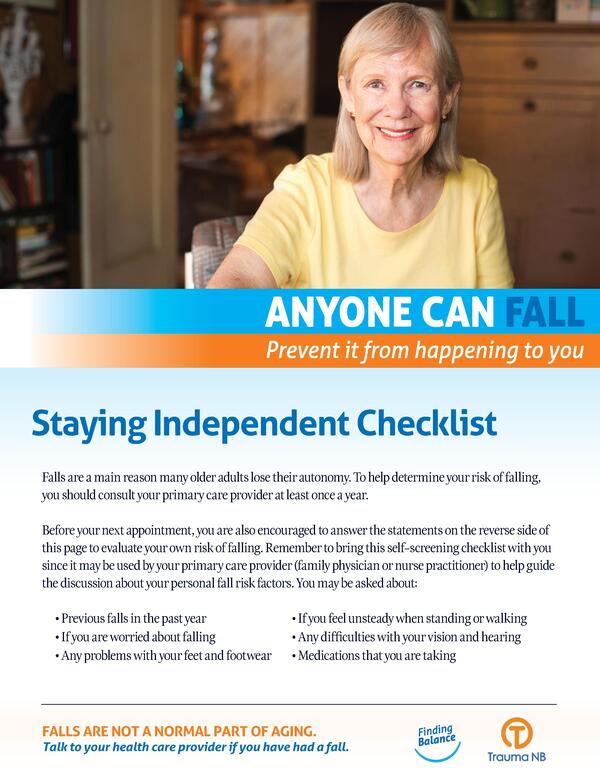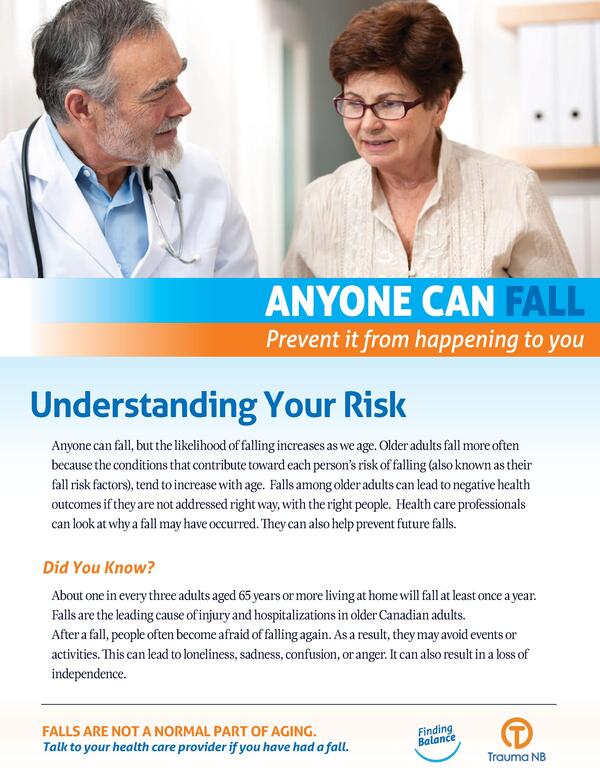Am I At Risk For a Fall?
Everyone is at risk for a fall, regardless of age. However, studies have shown that the more risk factors a person has, the greater their chances of falling.
What is a Risk Factor?
A fall risk factor, such as reduced muscle strength, impaired balance or visual impairment, is something that increases a person’s chance of falling. Since the number of fall risk factors a person may have usually increase with age, falls occur more often among older adults.
This could be due to a combination of different fall risk factors which are typically grouped into four categories according to the BBSE Model: Biological, Behavioral, Social/Economic and Environmental.

Assessing Your Risk of Falling
Fall Risk Assessment
A fall risk assessment is a process that starts with an initial screening to determine whether a person is at high risk of falling.
If needed, their primary care provider (family physician or nurse practitioner) may proceed with a comprehensive assessment to help identify fall risk factors and recommend personalised strategies to prevent falls and reduce the risk of injury.
Staying Independent Checklist
The Staying Independent Checklist is a self-screening tool that can be used by your primary care provider to help with the discussion about personal fall risk factors.
Remember to print and bring your completed copy of this brochure to your appointment.
Did You Know?

Consulting Your Primary Care Provider
It is important to talk about falls or near-falls you may have had over the past year with your primary care provider to make it easier to identify and address personal fall risk factors as soon as possible.
However, if you do not currently have a provider, you are encouraged to register with NB Health Link. Once registered, you will be assigned to a provider on a first come, first-serve basis. For more information or to register, please call Tele-Care at 811 or click on the following link.




